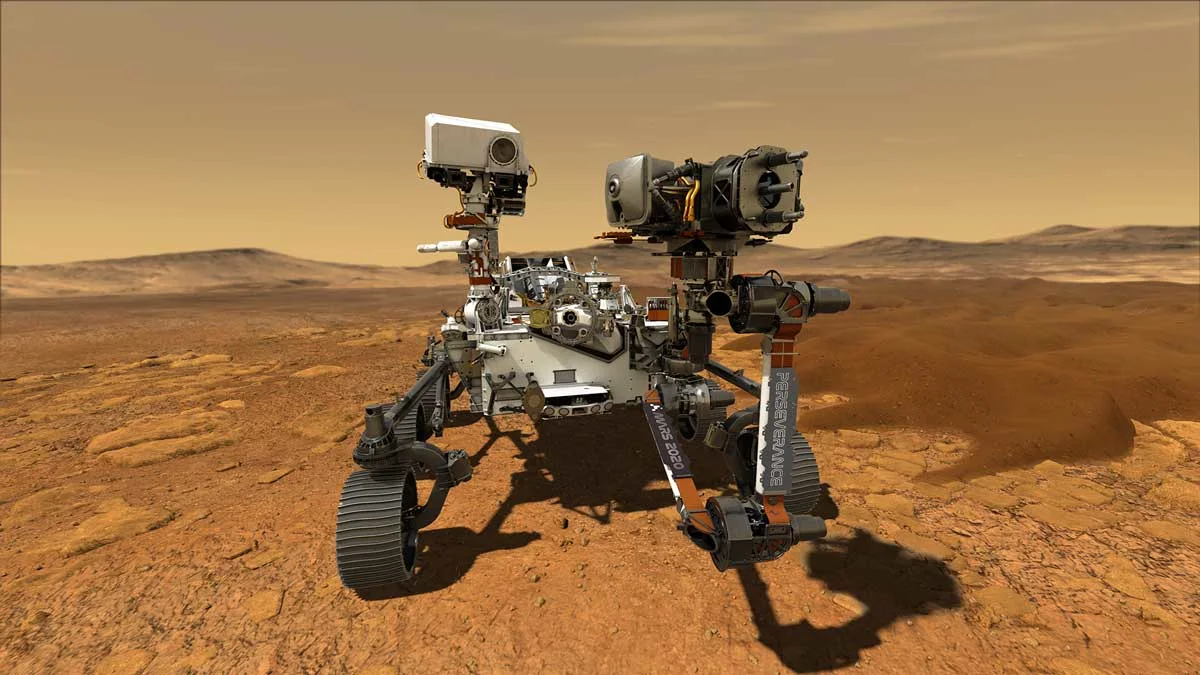
The biggest events around Earth, the Moon, Mars and beyond for 2020
It's another busy year in space exploration!
This year is setting up to be an amazing one for astronomy and space exploration. There are some spectacular sights to behold in the night sky. New robotic missions are leaving for the Moon and Mars. Plus, we may even see humans launching into space aboard two (or maybe even three) new spacecraft.
Here are the updated major events happening in 2020.
(ON OR AROUND) EARTH
The very first event in our night sky, on Earth, is the Quadrantid meteor shower, which peaks on the night of Friday, January 3. The best time to watch will be in the hours after midnight, once the first quarter Moon has set. As one of the best meteor showers of the year, the Quadrantids can deliver around 120 meteors per hour under ideal conditions (clear, dark skies, far from city light pollution).
Look up in the night sky on April 7 to see the biggest and brightest Full Moon of the entire year. This year's Pink Moon just so happens to be 2020's 'Perigee Full Moon' (aka Supermoon), or the closest Full Moon of the year. Due to being around 28,000 km closer to Earth than average, the Moon will appear slightly bigger, but noticeably brighter, all night long.
UPDATED (June 1): SpaceX launched its Crew Dragon spacecraft, the very first to carry astronauts - specifically Doug Hurley & Bob Behnken - up to the International Space Station. After two delays due to weather concerns, on Wednesday the 27th and Thursday the 28th, a Falcon 9 rocket boosted the Dragon into orbit on Saturday, May 30.
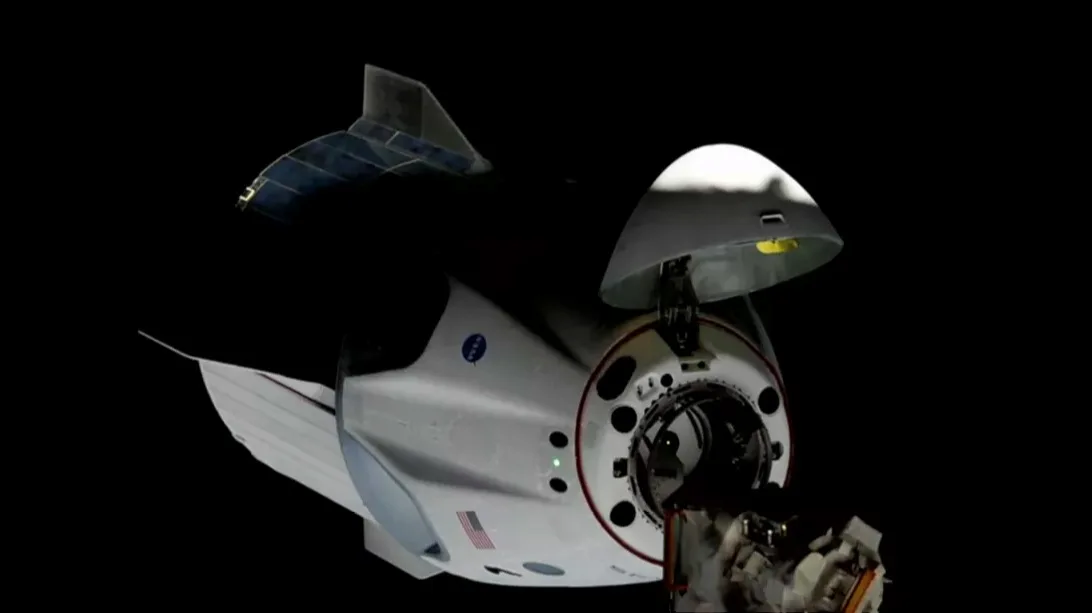
In its first crewed flight to orbit, the Crew Dragon spacecraft docked at the ISS on May 31, 2020. Credit: NASA/SpaceX
Later this year, Boeing's CST-100 Starliner is supposed to make another uncrewed test flight to the Space Station, due to the complications during ts first uncrewed launch, late last year. No new launch date has been set at this time.
The Perseid meteor shower will peak on the night of August 12. Although the phase of the Moon is not the most ideal for this shower (third quarter, rising around midnight), this is consistently a great sight to get out and see.
When you're out trick-or-treating on October 31 this year, take a moment to look up to see a 'Halloween Mini Blue Moon'. The Full Moon on the night of October 31 will be the second Full Moon of that month, and it will also be 2020's 'Apogee Full Moon' - the farthest, and thus smallest and dimmest, Full Moon of the year.
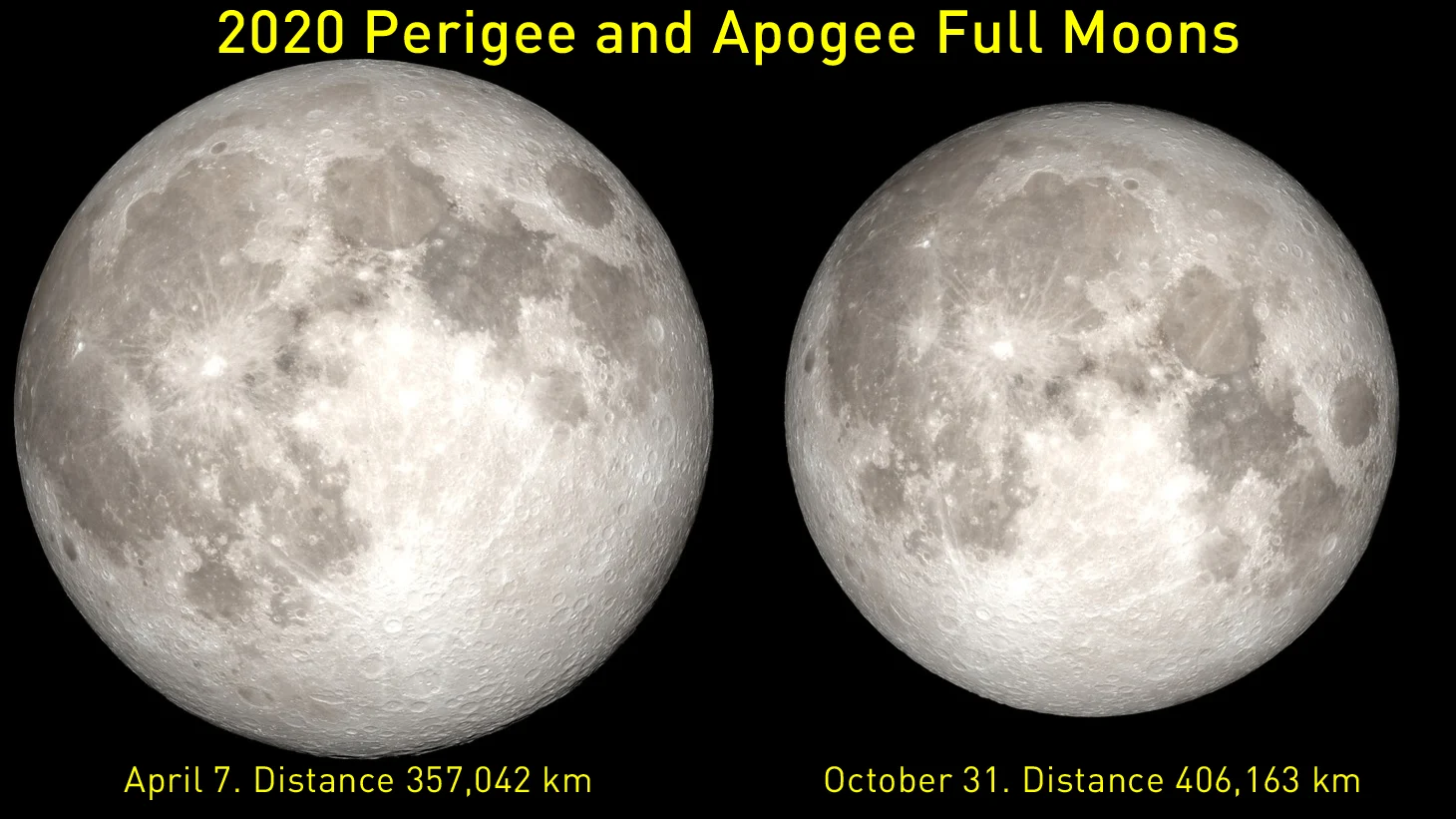
A comparison of the closest and farthest Full Moons of 2020. Credit: NASA's Scientific Visualization Studio/Scott Sutherland
Finally, on December 14, we will not only be treated to a Geminid meteor shower that will be taking place on the night of a New Moon (and thus have the best viewing potential), but Chile and Argentina will see their second Total Solar Eclipse in two years!
As a bonus, SpaceX may be launching its Falcon Heavy rocket before the year ends, and Japan's Hayabusa 2 spacecraft is due to drop off its sample-return capsule, with samples collected from Asteroid Ryugu, in December.
THE MOON
We saw something of a rush to get back to the Moon in 2019, and that trend will continue in the year to come.
Although the Moon Express team did not complete their mission in time to win the Google Lunar Xprize, they are still planning on launching their Lunar Scout lander, with its International Lunar Observatory, sometime in 2020. The current schedule for this launch is in June or July, with a landing near the Moon's south pole likely later this year.
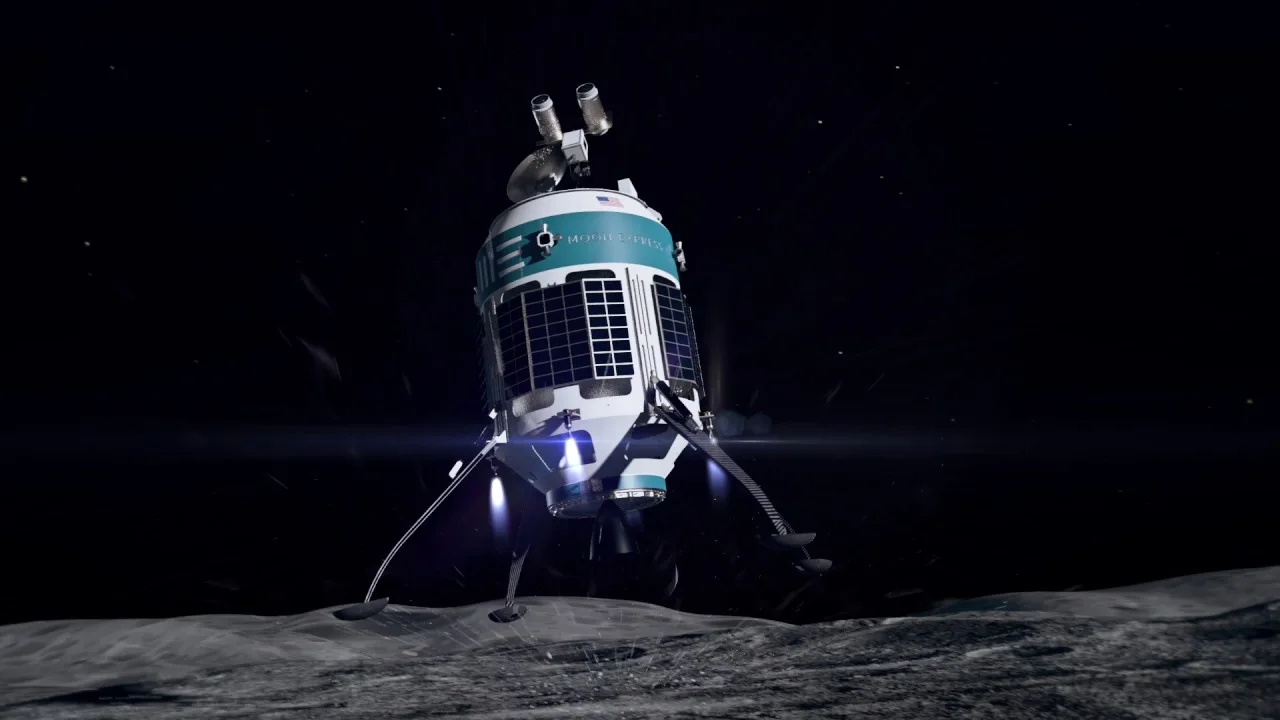
This artist's impression shows the Lunar Scout landing on the Moon's surface. Credit: Moon Express.
In the later months of this year, things are expected to get very busy in Lunar orbit and on the Moon's surface. Before the end of 2020, we will likely see the launch of China's Chang'e 5 lander and rover, India's Chandrayaan-3 lander, and NASA's CAPSTONE lunar orbiter, which will test the long-term stability of the planned Lunar Gateway station.
We may even see a launch of the Artemis 1 mission, which is an uncrewed flight of NASA's Orion spacecraft on a trajectory around the Moon and back to Earth, and SpaceX has ambitious plans to send its Starship spacecraft on an orbital flight before the year is over.
MARS
Mars' population of active robots dropped by one in 2019, but the Curiosity rover and InSight lander will soon have more friends on the Martian surface.
In July of this year, everything is going to line up perfectly to launch spacecraft from Earth and Mars, and there are currently four different missions on the schedule to take advantage of that critical window of opportunity.
UPDATED (July 30): NASA's Perseverance rover, formerly known as Mars 2020, is on its way to Mars, after lifting off from Kennedy Space Center on July 30, at 7:50 a.m. ET.
According to NASA, during a 'Wet Dress Rehearsal', to ensure all of the different the rocket systems are working properly for a launch, the booster's liquid oxygen fuel system returned data that the team did not like. Thus they needed more time to inspect the system and evaluate the issue.
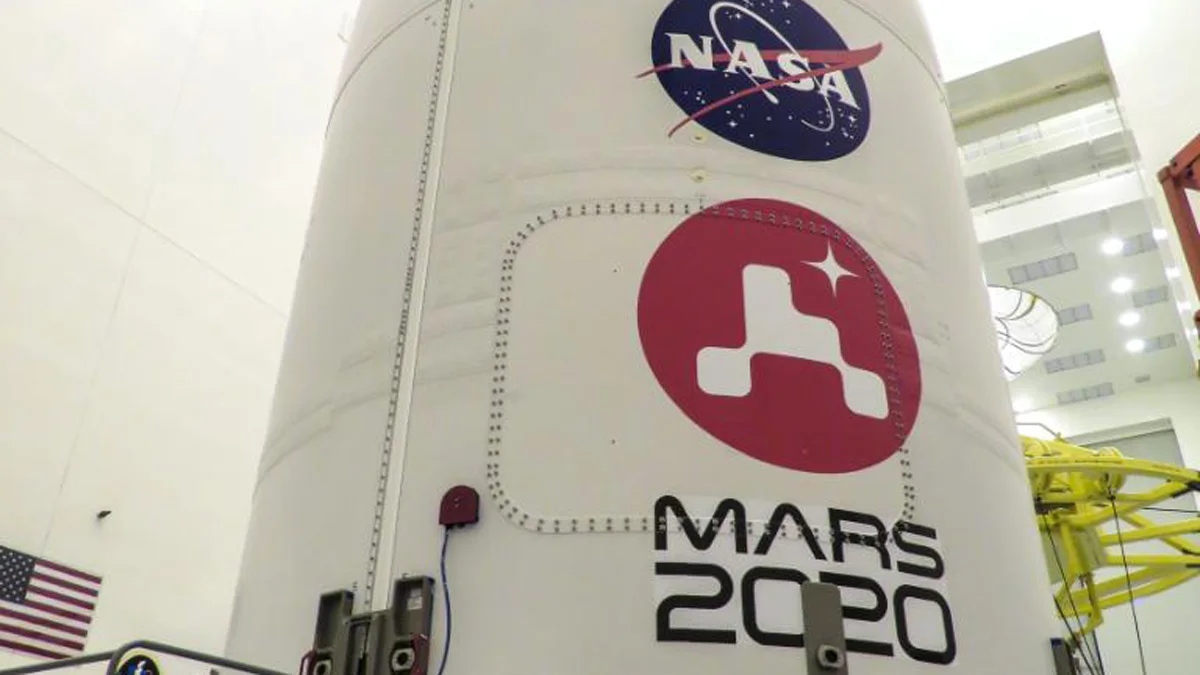
The Mars Perseverance mission logo stands out boldly on the side of the Atlas rocket fairing, as the rover is packed away for its impending launch in July. Credit: NASA
With everything having gone as planned now, the rover on course to reach Mars and land in Jezero Crater on February 18, 2021.
Once it arrives, Perseverance and its tiny helicopter companion, Ingenuity, will set about exploring what was once a river delta on ancient Mars, in the hopes of finding evidence that life once lived on the Red Planet.
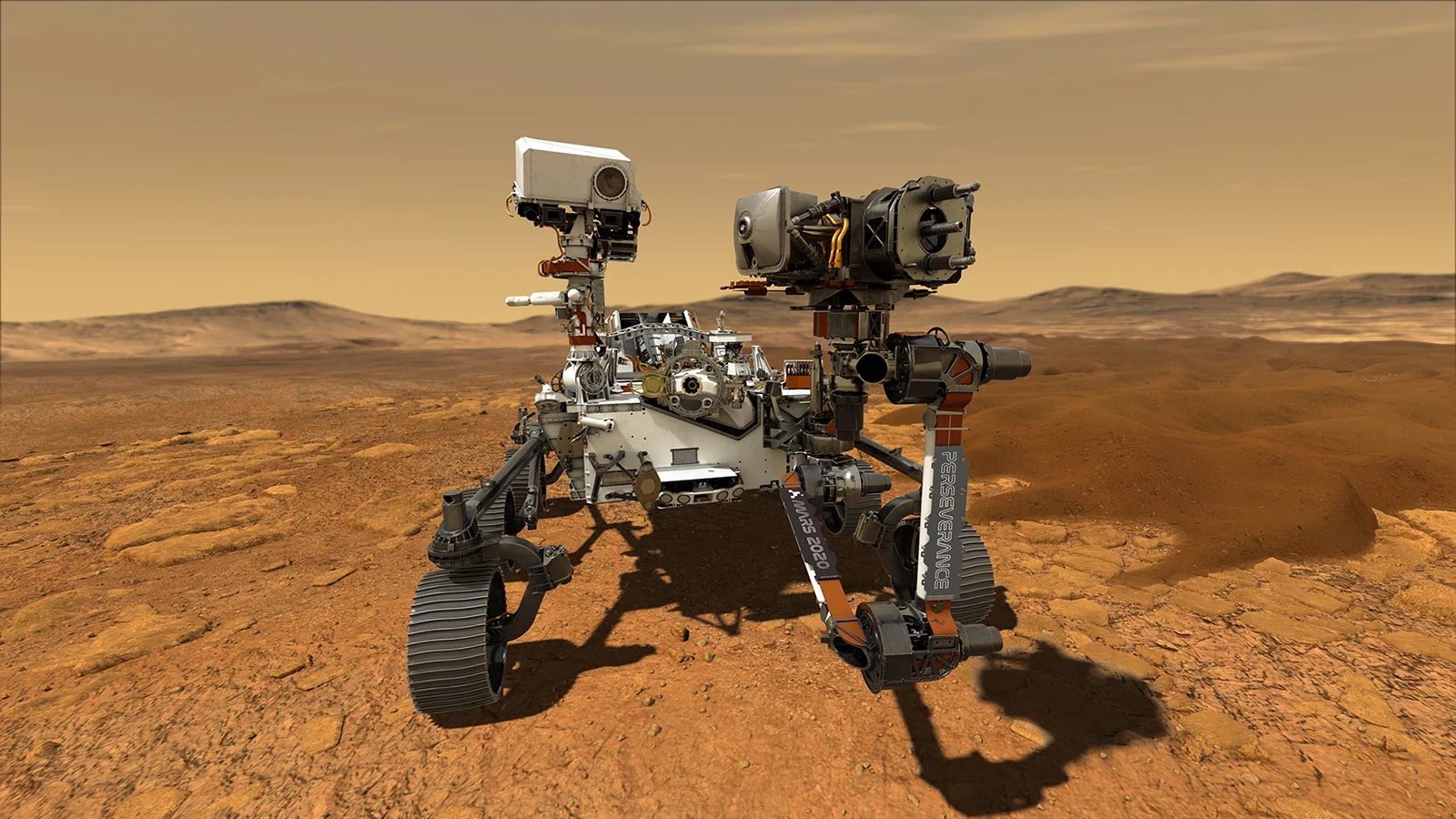
This artist rendition shows the Mars Perseverance rover exploring Jezero crater. Credit: NASA/JPL-Caltech
UPDATED (March 12): The European Space Agency announced that they, along with the Roscosmos Space Corporation, have delayed the launch of ExoMars 2020 mission, which includes the Rosalind Franklin rover. The decision was made after evaluating everything that still needed to be done to insure the mission's successful trip to, and landing on, Mars. It is now scheduled to launch in August or September of 2022, when the next Mars transfer orbit window opens.
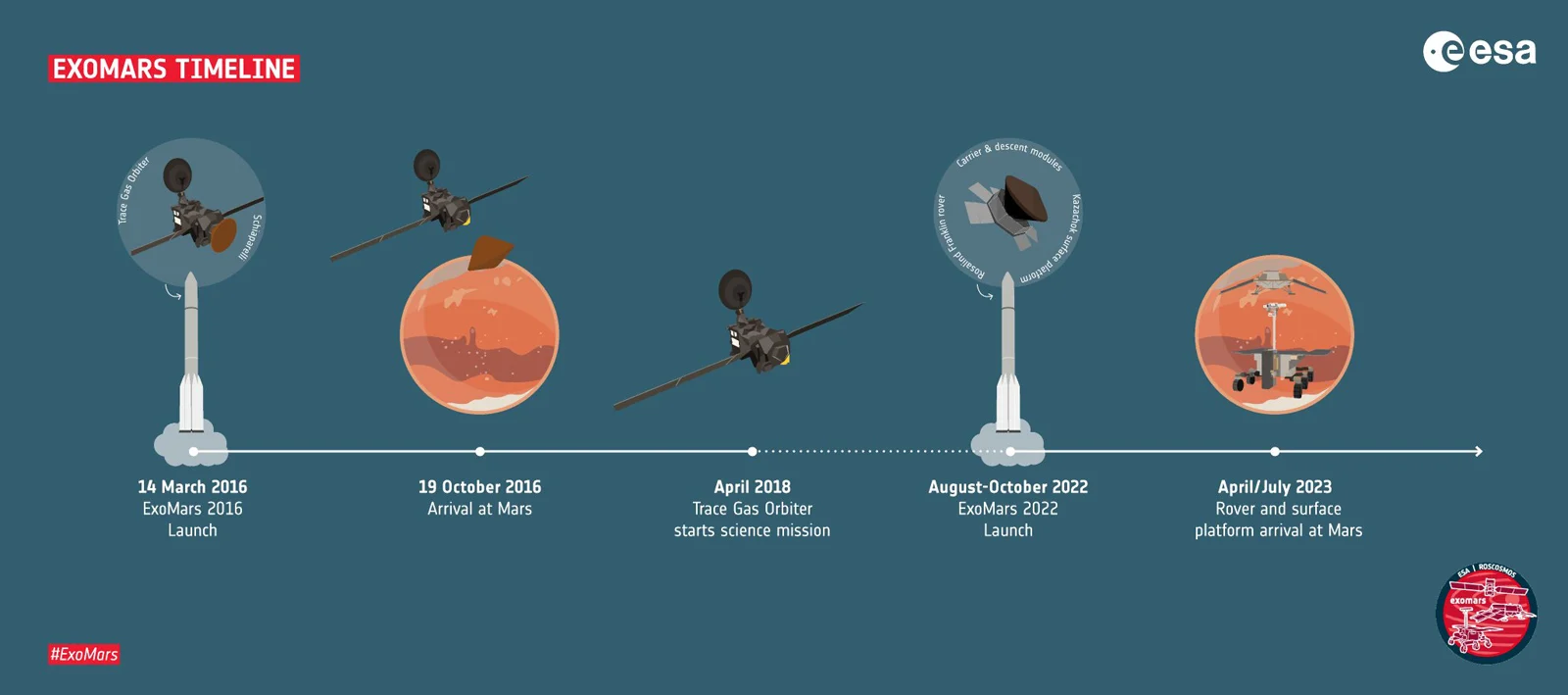
China is planning on sending their Mars Global Remote Sensing Orbiter and Small Rover (aka Huoxing 1) mission to land, most likely in Utopia Planitia, sometime likely in April of 2021. With Huoxing 1 (which means Mars 1) also searching for signs of life, past or present, this really could be the year we find evidence of life on Mars!
Updated (July 13): Rounding everything out, the United Arab Emirates plans to launch an orbiter spacecraft, called the Hope Mars Mission, to study Mars' atmosphere, weather and climate. This mission was scheduled to launch on Wednesday, July 15, atop a Japanese H-IIA rocket, from the Tanegashima Space Center. As of two days before the launch window, however, there are concerns that stormy weather will delay liftoff. The final decision will come on Tuesday.
JUPITER
Nothing new is launching to Jupiter in 2020 (we have to wait until at least 2025 for that), but NASA's Juno spacecraft is still looping around the giant planet. It is set to make seven more close approaches ('perijoves'), between mid-February and late December 2020.
To see what a 'perijove' flyby looks like from Juno, watch the above video. The images that went into making the video were snapped by JunoCam during perijove 16, on October 29, 2018.
ASTEROID BENNU
Things are getting exciting again for the OSIRIS-REx spacecraft, currently orbiting Asteroid Bennu, out in interplanetary space.
It's been over a year and a half since the spacecraft arrived at its destination. It has already produced some stunning maps of the immense 'rubble pile' asteroid known as Bennu, and noted some particular strange science going on there.
On October 20, 2020, OSIRIS-REx will make its first attempt to touch the surface of the asteroid, and blast off a small sample that it will collect for return to Earth.
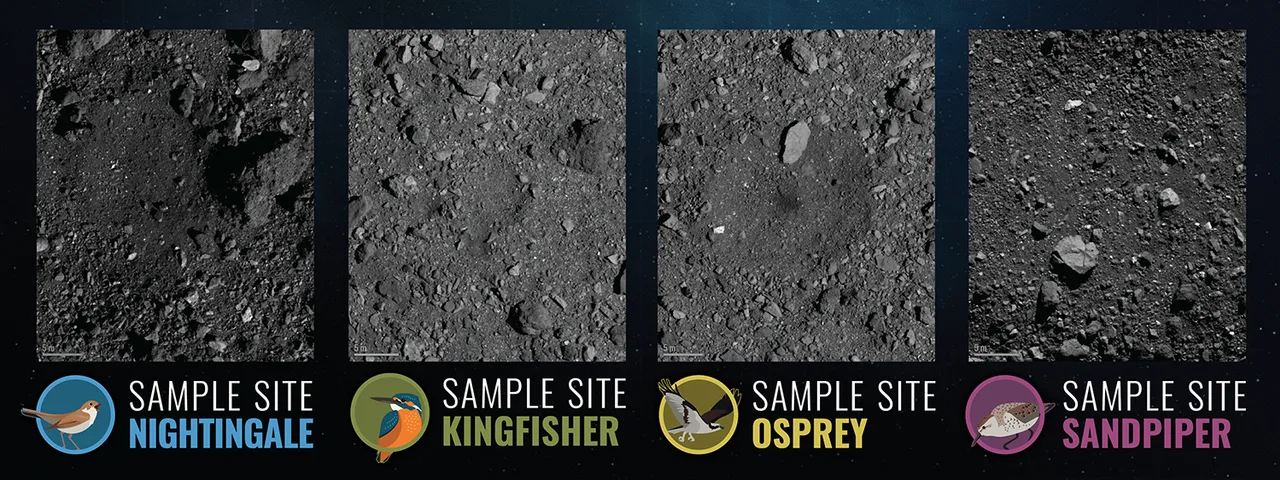
The OSIRIS-REx potential sample sites. Credit: NASA/Goddard/University of Arizona
Of the four locations on the surface that the mission team chose - nicknamed Nightingale, Kingfisher, Osprey and Sandpiper - the Nightingale site was finally selected as the primary site for this sample collection.
THE SUN
Given that the Sun is our closest star, it's remarkable how much we still have to learn about it.
NASA's Parker Solar Probe is still going strong on its dives into the solar corona, sending back new data that will help us track space weather and the solar wind. In 2020, PSP is set up to make three close passes around the Sun.
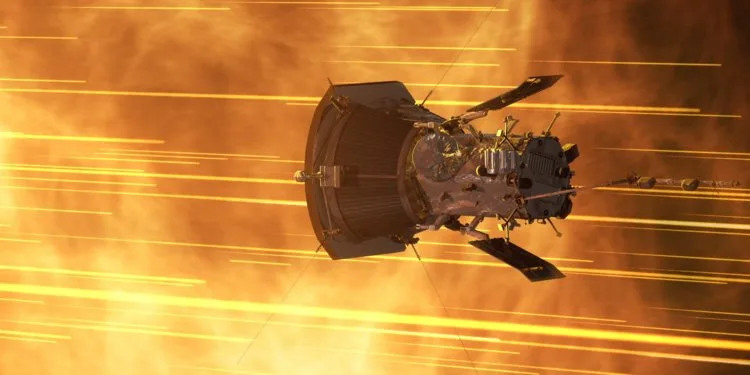
Parker Solar Probe flies through perihelion in this artist's conception. Credit: NASA
On December 26, after performing a Venus flyby, the spacecraft was put on a trajectory for its two closest loops around the Sun for the mission so far. Its closest distance to the Sun (perihelion) was reduced to 19.4 million kilometres for the January 29 and June 7 passes (down from 24.8 million kilometres in 2019). After successfully completing both orbits now, it will make its third (and second-closest) Venus flyby of the mission in July. That will shift its orbit to bring it even closer to the Sun - 14.2 million km - for its September 27 perihelion.
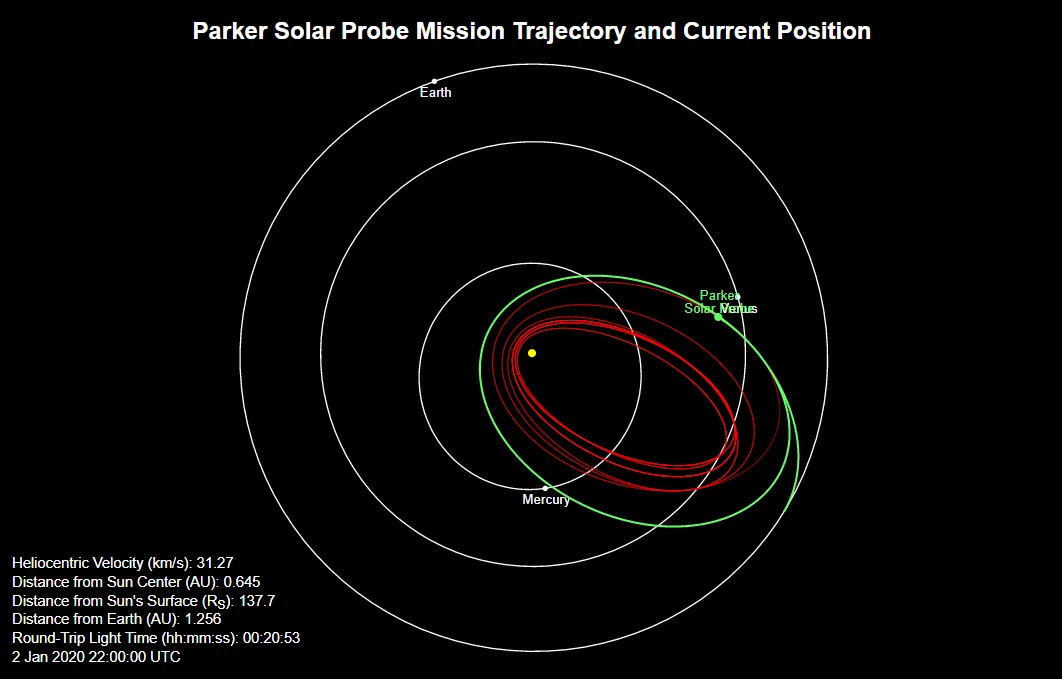
Parker Solar Probe's location as of January 2, 2020. Credit: JHUAPL
Parker Solar Probe is due for some company this year, as well. The European Space Agency's Solar Orbiter launched on February 9th, on a 7-year mission to study the solar wind and the inner region of the Sun's heliosphere (the bubble of space contained within the Sun's immense magnetic field).
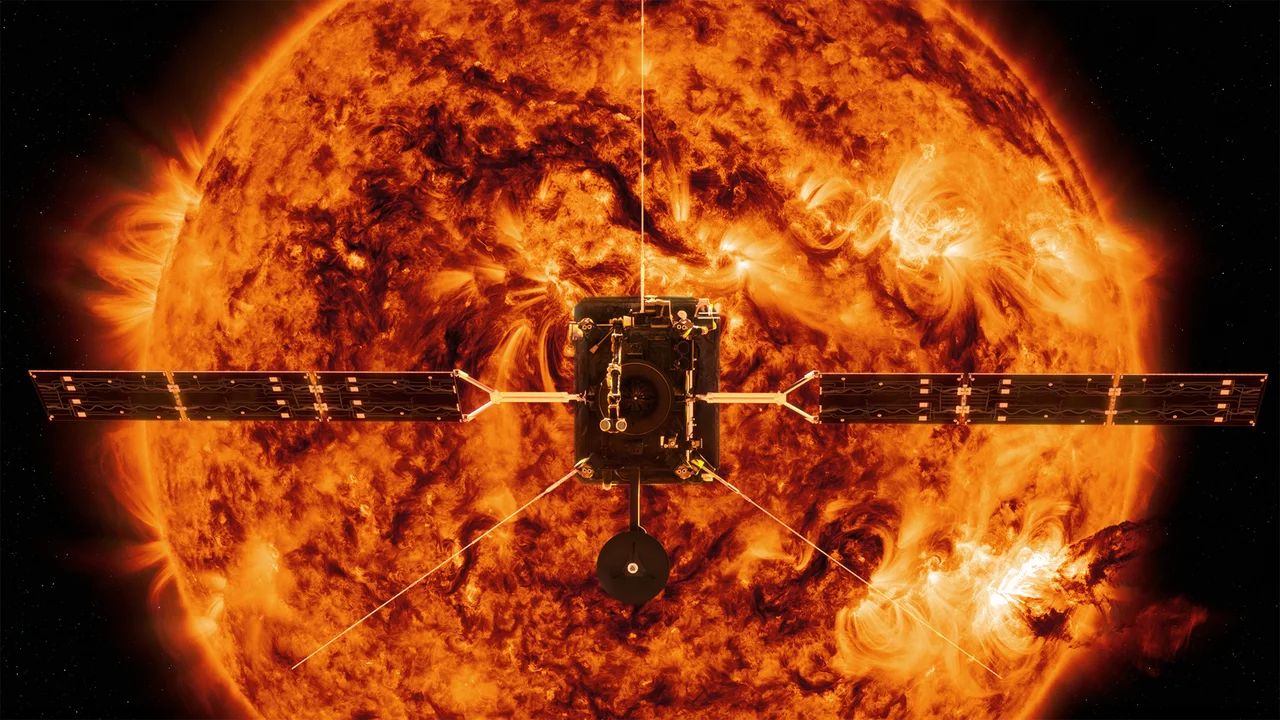
An artist's conception of the Solar Orbiter. Credit: Spacecraft: ESA/ATG medialab; Sun: NASA/SDO/ P. Testa (CfA)
Solar Orbiter won't get as close to the Sun as the Parker Solar Probe, only coming to around 42 million kilometres distance on any particular close pass. Still, it should be able to coordinate observations with PSP, especially during events like solar flares and coronal mass ejections (aka solar storms).











